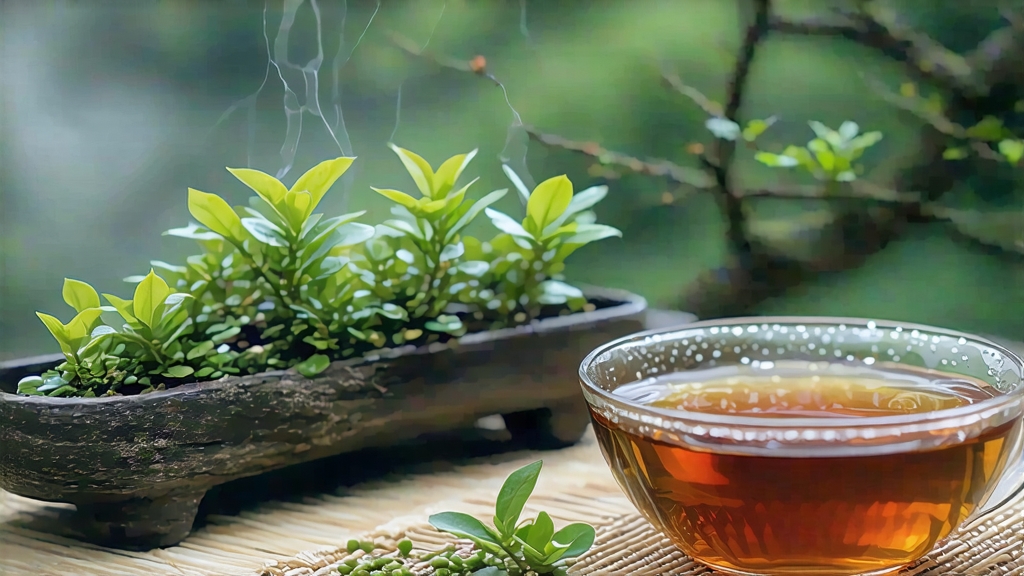
Tieguanyin, literally “Iron Goddess of Mercy,” is the most revered name within the vast oolong family. To the Chinese nose it is spring orchards carried on a mountain breeze; to the Chinese tongue it is cream, stone fruit and a cooling sweetness that lingers like a temple bell. Yet beyond romance lies a 300-year chronicle of soil, craft and devotion that has turned a single Fujian cultivar into a global icon of nuanced tea.
Origin stories differ—some say the goddess Guanyin appeared in a dream to a devout farmer named Wei Yin, others that a scholar found a cutting near an iron statue of the bodhisattva—but all agree the birthplace is Anxi County, western Fujian. Here, granite peaks trap maritime clouds, creating the diurnal temperature swing that coaxes slow growth and concentrated aromatics. The native Hongxin (“red-stem”) cultivar, with its oval leaves and serrated edges, thrives in iron-rich laterite soils at 600–1,000 m, roots tickled by ever-present mist.
Tieguanyin is not one tea but a spectrum of styles born from one plant. The traditional “strong style” (nong xiang) is 50 % oxidised and charcoal-baked, yielding cocoa, roasted nuts and a velvety body. The modern “light style” (qing xiang) stops oxidation at 20 %, preserving bright florals and a jade-green infusion. Between them lie “moderate” (zhong xiang) and the rare “aged” (lao tie), cellared for decades in earthen jars until it develops medicinal, camphor notes. Each style is a conversation between leaf and master, never repeated exactly.
Harvest begins at Qingming when two leaves and a bud are snipped with the nail of the forefinger to avoid bruising. The baskets are rushed to the village alleyways where the real choreography starts. Sun-withering reduces moisture to 70 %; indoor cooling on bamboo trays allows internal enzymes to awaken. Then comes yao qing, “shaking green”: the leaves are tumbled in rattan sieves for five to eight rounds, edges knocking gently until rimmed with red—partial oxidation in action. A short sha qing (“kill-green”) at 280 °C locks the 20–50 % oxidation level, followed by rolling and compression that twists leaves into the signature dragonfly-head shape. Finally, the tea is baked three times over 40 days, each bake cooler than the last, charcoal embers releasing plumes of sweet smoke that penetrate to the stem.
To brew Tieguanyin gongfu style is to stage a miniature opera. A 120 ml porcelain gaiwan is warmed until too hot to hold; 7 g of leaf—enough to fill the lid—rattles inside like loose change. The first rinse, 95 °C water for three seconds, is discarded; it is a polite knock on the leaf’s door. Subsequent steeps start at 10 seconds, adding five each round. Watch the liquor shift from pale citrine to deep honey; inhale the lid aroma that oscillates between gardenia and warm milk. On the tongue the light style crackles like green apples, while the strong style drapes the palate in roasted sweet potato and mineral depth. The seventh infusion often surprises with a return of orchid, a phenomenon locals call yun gan hui—“the returning charm.”
Professional cupping follows a quieter script. Three grams, 150 ml, 100 °C, five minutes. The dry leaf is inspected for tightness and color variegation; the wet leaf for elasticity and red fringe. Aroma markers are graded for intensity, persistence and complexity: top notes (floral, fruity), base notes (char, honey), and empty-cup scent—the perfume left when the liquor is poured out, a Tieguanyin signature. Flavour balance hinges on four axes: fragrance (xiang), richness (chun), astringency (se) and huigan, the cooling sweetness that floods the throat minutes later. A 90-plus score requires all four to sing without one shouting.
Storage is the silent guardian of quality. Light-style Tieguanyin must be vacuum-sealed and frozen at –5 °C to lock in volatile esters; once opened, consume within a month. Strong-style, having been charcoal-stabilised, prefers breathable kraft paper and 60 % humidity, improving for two